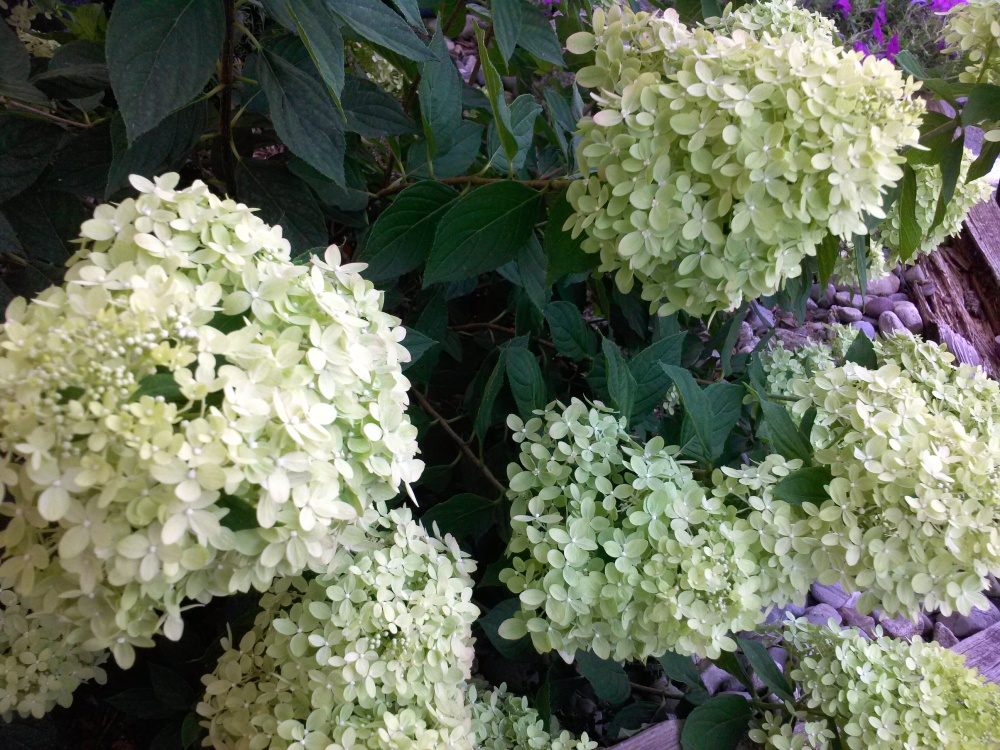A single thunderstorm will not relieve the dryness of several weeks without rainfall. But, who am I to complain?
If I had not gotten the itch to plant a few things a week ago I wouldn’t be concerned at all by the lack of soil moisture. This garden has survived spells much drier than this, and I’ve only been concerned about the newly planted hydrangea (Hydrangea paniculata ‘Little Lime’). This shrub (along with Mahonia confusa ‘Narihira’) was planted in place of three Northern Sea oats (Chasmanthium latifolium), which are only moderately well behaved in part shade when the soil beneath is covered by a solid mat of small leafed hostas, coral bells (Heuchera), and Creeping Jenny (Lysimachia nummalaria ‘Aurea’). But, with a bit more sun their abundant seeds germinate in every direction, and they become quite a nuisance.
The sea oats were dug, stripped of as much soil as possible, and tossed aside beneath tall deciduous azaleas, to be discarded into the compost when I’ve more energy. Certainly, there will be a number of seedlings growing once the grasses are picked up, but at the time this was a lesser concern than getting out of the heat as quickly as possible. In the hot, dry week following planting, the mahonia showed no signs of stress, but as hydrangeas do, ‘Little Lime’ wilted a bit in the afternoon sun. Fortunately, on the day when it remained wilted into the morning, rain arrived.
Several Japanese maples (Acer palmatum) in full sun look a bit weather worn, and the tree lilac (Syringa reticulata ‘Ivory Silk’) that has struggled in recent years looks more weary than usual in late August. Finally, a few of the stinging caterpillars that are larvae of the White Flannel moth have appeared on ‘Silver Cloud’ redbud (Cercis canadensis ‘Silver Cloud’), though they are less numerous than a year ago when they defoliated the tree. I don’t expect so much damage this summer, but the caterpillars are hard at work. 
This afternoon, without discussion, my wife sprayed an indoor bug killer on two nests of fall webworms in the deciduous hollies (Ilex ‘Sparkleberry’). I wouldn’t have bothered, and why she decided to spray, I didn’t ask, since she knows that I don’t spray for bugs of any sort. I expressed only mild annoyance, though I did mutter loudly as I walked to make certain she had not also sprayed the redbud’s caterpillars.
The hollies have only a few scattered berries this year, I suspect the result of the confusing weather of early spring that is likely to have caused a disconnect with flowers of its pollinator. These things happen, though I’ve seen other hollies in the area with abundant berries. I am not too concerned when one thing or another goes wrong in the garden, since there is always something that is not right, along with many that are better than the gardener has the right to expect.
A few months ago I was quite concerned by the bluebeards (Caryopteris × clandonensis ‘Worcester Gold’) , which are also called blue mist shrubs, and probably also by a variety of other common names. These are semi woody shrubs, so that after any typical winter the half woody stems must be cut back, and the degree to which this is required is determined by the severity of the winter’s cold. This spring, that was to the ground, and I was concerned that they might not have survived when growth was also later than expected. But, most of the gardener’s worrying comes to nothing, and today the bluebeards display no ill effect from the cold or their late start.